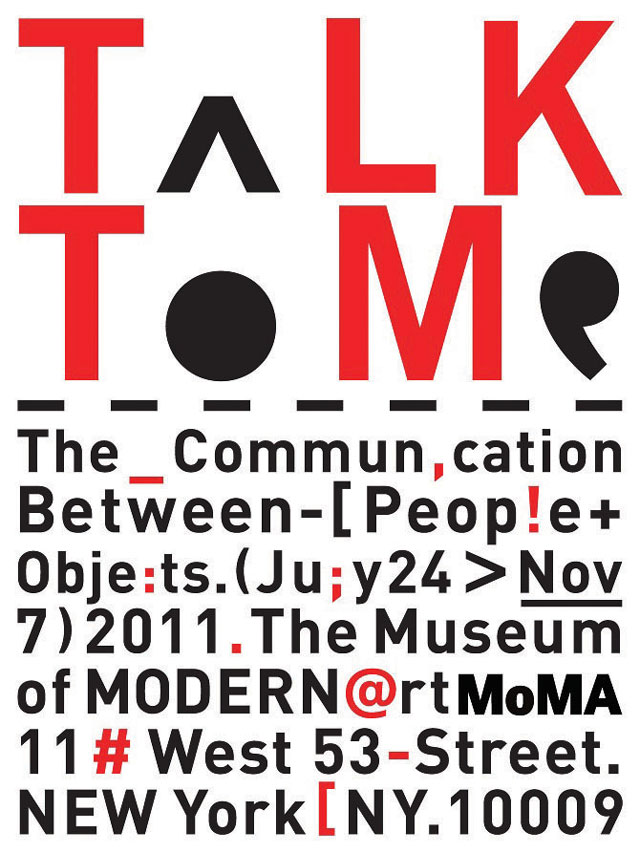2015 AIGA Medalist: Paola Antonelli

Recognition
2015 AIGA Medal
Born
1963, Sardinia, Italy
By Chee Pearlman
September 7, 2015
Follow Us
Recognized for expanding the influence of design in everyday life by sharing fresh and incisive observations and curating provocative exhibitions at MoMA.
“There are still people who believe that design is just about making things, people, and places pretty. In truth, design has spread like gas to almost all facets of human activity, from science and education to politics and policymaking.”
So said the willful and forward-thinking Paola Antonelli in 2010 to The Economist. Cheerfully determined to upend the global conversation on design, Antonelli always speaks passionately about the profession she has serially defined and redefined since taking the reins as senior curator of Architecture and Design for the Museum of Modern Art in 1994. More than 20 years on, Antonelli has only deepened her sense of mission, using her platform at one of the world’s juggernaut museums to become design’s Thought-Leader-in-Chief.
Born on the island of Sardinia, Antonelli was raised in Milan. Both her parents were doctors: her father a prominent surgeon and her mother a laboratory researcher. That she landed in design at all was thanks to a fortuitous dislike of her college major. After two years pursuing “really brainy mathematical economics,” she shifted her focus to architecture at the Politecnico di Milano. In Italy in the 1980s, the degree was theory-laden. Her favorite professor taught construction and material science—the nuts and bolts of building—on Tuesdays, and on Fridays he lectured on Heidegger, Adorno, and Hume. Paola’s enthusiasm for these philosophers was augmented by the practical wisdom of pop music—she credits The Beatles for teaching her English.

Exhibition view of "This is for Everyone: Design Experiments for the Common Good," 2015.

Photo by Robin Holland.

Exhibition view of "This is for Everyone: Design Experiments for the Common Good," 2015.
In 1993, after a series of curatorial and writing projects in Milan as well as a teaching appointment at the University of California, Los Angeles, Antonelli stumbled upon a classified ad placed by MoMA in I.D. Magazine. The tiny advertisement, tucked away in the back pages, called out to her like a siren. She interviewed with Terence Riley, chief curator of architecture and design, and Philip Johnson, the first director of the Department of Architecture. By early 1994, the job at MoMA was hers.
Armed with confidence and charisma, not to mention a musical Italian accent, Antonelli has dogged the museum, its audience, and the profession as a whole to embrace changes in design. She marked her debut in 1995 with the ambitious, large-scale exhibition “Mutant Materials in Contemporary Design,” a show that eschewed standard museum protocol by pulling away the Plexiglas cases and letting visitors touch samples of the carbon fibers, polymers, resins, and high-tech ceramics that had become the cutting-edge toolset for designers. Even if those visitors had come to the museum to see Picasso and Matisse, Antonelli made it her job to intercept them with design.
Without much fanfare, “Mutant Materials” marked a major watershed for MoMA: the debut of its first website. At that time, not many people knew what a website was, much less how to make one. Antonelli took a scant budget of $315 and used it to take cabs after work to study with a software professor at the School of Visual Arts. There she learned how to code HTML and created a site for the exhibition herself, pitching MoMA into the digital age.

Exhibition view of "Design and the Elastic Mind," 2008.

Poster for "Talk to Me," 2011.

"@" by Ray Tomlinson, 1971.

Thomas Miller, Detail from the DuSable mosaics, 1995. DuSable Museum of African American History, Chicago. Photograph: Chris Dingwall.
Her arrival at MoMA was perfectly timed with the technology and communications explosion. Of the 18 or so design exhibitions she’s mounted since the mid-1990s, most have responded to the dynamic cultural and technological revolutions of our age; changes that curators of more codified disciplines have been slower to accept.
With her landmark 2008 exhibition, “Design and the Elastic Mind,” Antonelli was all in. The show anointed designers as translators and humanizers of complexity, the interface between momentous change and the possibility of embracing progress. The architecture critic for the New York Times wrote: “As revolutionary in its own way as MoMA’s ‘Machine Art’ exhibition of 1934, which introduced Modern design to a generation of Americans, the exhibition is packed with individual works of sublime beauty. Like that earlier show, it is shaped by an unwavering faith in the transformative powers of technology.”
One of Antonelli’s boldest moves was to acquire the @ symbol for the permanent collection in 2010. The mark is documented to have been in use since 1536 and is theorized to have originated as a shortcut in Latin for “toward,” or in French for “at,” but by the 20th century it sat unused on most keyboards. When computer scientist Ray Tomlinson helped create the first email system in 1971, he put it to use as an address routing device.
The acquisition was mystifying to some, and raised the issue of what it means to collect something that’s not a physical object. But that was precisely the point: design is everywhere, not just in items to be purchased or consumed. Antonelli explained the concept with a rationale that all designers of anonymous unsung solutions could love:
“Tomlinson performed a powerful act of design that not only forever changed the @ sign's significance and function, but which also has become an important part of our identity in relationship and communication with others. His (unintended) role as a designer must be acknowledged and celebrated by the one collection—MoMA’s—that has always celebrated elegance, economy, intellectual transparency, and a sense of the possible future directions that are embedded in the arts of our time, the essence of modern.”
After the @ acquisition positioned Antonelli as avant-garde, collecting 14 video games a few years later cemented her pioneering stature. “I really do believe that design is the highest form of creative expression,” she told an audience at a TED Conference. “I want people to understand that design is so much more than cute chairs, that it is first and foremost everything that is around us in our life.”
If design has spread like gas, Antonelli herself has travelled nearly as far. From the World Economic Forum to conferences around the globe, she’s addressed diverse audiences with the message of design’s transformative power. On Twitter, her handle is @curiousoctopus, and she’s often seen wearing a small octopus amulet, telegraphing her quest to extend her understanding and her reach.
At a time when human knowledge doubles every two years and technological impact continues to accelerate, Antonelli is a design curator for our age. She sees the paradigm shifts before they occur, and celebrates designers as they make necessities functional, if not beautiful.
Resources
“The World in 2036: Design Takes Over, Says Paola Antonelli.” The Economist. November 22, 2010.
Ouroussoff, Nicolai. “
The Soul in the New Machines.” The New York Times. February 22, 2008. Design Review.
Antonelli, Paola. “@ at MoMA.” Inside/Out. March 22, 2010.